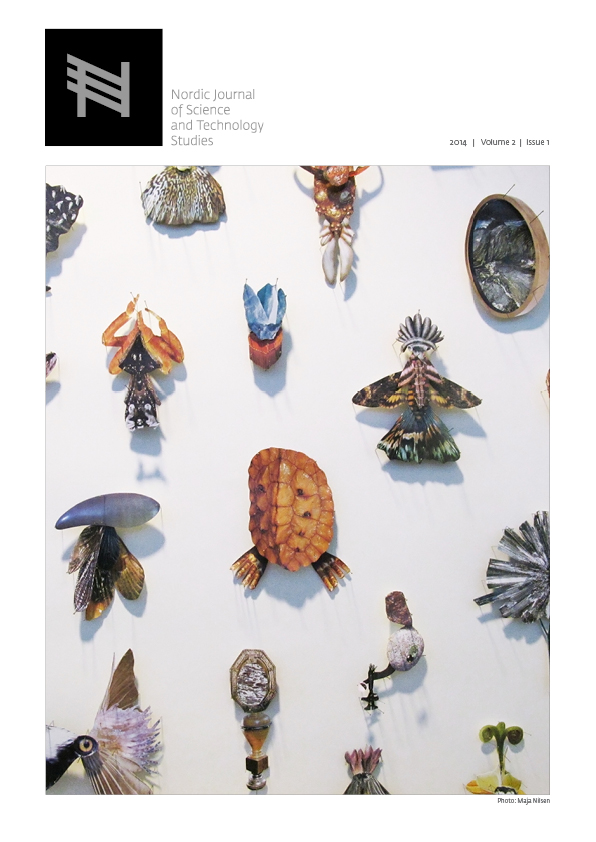Stumbling over Animals in the Landscape: Methodological Accidents and Anecdotes
DOI:
https://doi.org/10.5324/njsts.v2i1.2133Resumen
This article explores the potential of giving animals a more prominent role in landscape studies. Through an historical constructivist approach, animals can function as object, text, happening, and as a fragment of a larger environmental history. Using empirical examples from Norway and Scotland, animals’ symbolic, social, and cultural availability are addressed. After presenting two case studies I claim that we can enrich our understanding of rural landscapes by including animals. Animals help uncover the meanings people embed in their landscape. By using the term animalscape, animals can more straightforwardly be incorporated both methodologically and analytically in rural studies.
Descargas
Citas
Baker, S. 1993. Picturing the beast: animals, identity, and representation. Manchester; New York: Manchester University Press.
Bruvoll, T. E. 1998. Skogbruk og skogsarbeid i Snåsa, History, Trondheim: NTNU.
Crawford, A. 2003. Fourth otter survey of England 2000-2002. Bristol: Environmental Agency.
Douglas, M. 1975. Implicit meanings: essays in anthropology. London: Routledge and Kegan Paul.
Evans, G.E. 1962. Ask the Fellows Who Cut the Hay. London: Faber & Faber.
Halberg, P. T. 1993. Den stolte sliter: skog- og landarbeiderne 1900 til 1990: en kamp for likeverd. Oslo: Fellesforbundet, Seksjon skog og land.
Holloway, L. 2003. “What a Thing, Then, Is This Cow...”: Positioning Domestic Livestock Animals in the Texts and Practices of Small-Scale “Self-Sufficiency”.” Society & Animals, 11 (2):145-165.
Ingold, T. 2000. The Perception of the Environment: Essays on Livelihood, Dwelling and Skill. London: Routledge.
Ingold, T. 1993. “The temporality of the landscape.” World archaeology; 25:2:137-284.
Jordheim, H. 2007. Humaniora: en innføring. Oslo: Universitetsforlaget.
Maxwell, G. 1960. Ring of Bright Water. Vol. 211. London: Longmans.
Syse, K. L. 2012. “A frame of trees.” In Green Oslo, edited by Per Gunnar Røe and Mark Luccarelli. London: Ashgate.
Syse, K. L. 2000. Lende og landskap: en analyse av skogens fysiske landskap og landskapspersepsjon i Nordmarka fra 1900 til 1999. Oslo: Universitetet i Oslo.
Syse, K. L. 2009. From land use to landscape: a cultural history of conflict and consensus in Argyll: 1945-2005, Oslo: Faculty of Humanities, University of Oslo.
Syse, K.L. 2013. “Otters as Symbols in the British Environmental Discourse.” Landscape Research 38 (4):540-552.
Thompson, P. 1988. Voice of the Past: Oral History, An Opus book. Oxford: Oxford University Press.
Thorsen, L. E. 1993. Det fleksible kjønn: mentalitetsendringer i tre generasjoner bondekvinner 1920-1985. Oslo: Universitetsforlaget.
Tveite, S. 1964. Skogbrukshistorie, Skogbruksboka (Særtrykk av bind 3). Oslo: Skogforlaget.
Williamson, H. 1927. Tarka the otter: his joyful water-life and death in the country of two rivers. London: G.P. Putnam’s sons.
Descargas
Publicado
Número
Sección
Licencia
All content in NJSTS is published under a Creative Commons Attribution 4.0 license. This means that anyone is free to share (copy and redistribute the material in any medium or format) or adapt (remix, transform, and build upon the material) the material as they like, provided they give appropriate credit, provide a link to the license, and indicate if changes were made.






